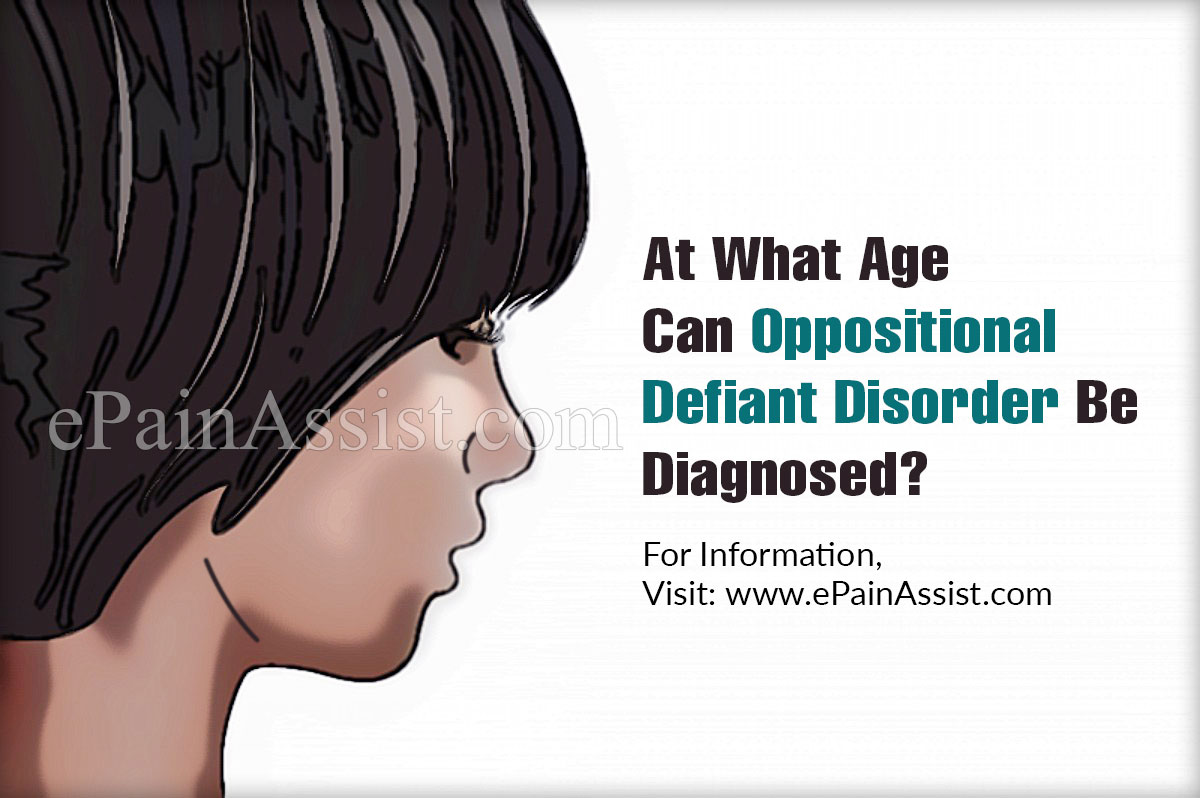Oppositional defiant disorder (ODD) is a widespread medical condition in small children and young adults. Oppositionality and related types of conduct disorder are some of the most common psychiatric problems in kid’s psychiatry. The oppositional defiant disorder is classified under disruptive behavior disorders and it is often resembling with other mental illnesses and basically triggers after the development of conduct disorder.
Studies show that this condition can develop kids on a bad day and almost any teenager almost every day. They tend to be more rebellious, hostile and deliberately irritate people even for the very small disapprovals or disappointments. Although this is typical adolescent behavior, yet the distinction lies in the frequency and intensity of the behavior.

At What Age Can The Oppositional Defiant Disorder Be Diagnosed?
For several children, the oppositional defiant disorder is something like a raisin in an oatmeal cookie, although present not the main ingredient. Children with the oppositional defiant disorder can see only the raisin and not the delicious cookie. However, early diagnosis always produces positive results. Generally, ideal symptoms of the oppositional defiant disorder appear before the age of 8.
Several studies have indicated that parents observe this in children at a very young age, a child with the condition was more inflexible and dissatisfied than his siblings. When you notice a disruptive behavior in a child’s attitude, don’t delay discussing it with your health care provider.
Your health care provider or a psychiatric specialist will generally wait until your child turns at least 5 to identify the behavior disorder. In many children, this is diagnosed only in their adolescence. Although this disruptive behavior is noticed in the children at 2 or 3 years old, there is the likelihood that it tends to change as they mature. However, in children affected with this condition, it progresses into a disorder if it this continues, your child’s life may turn into chaos with a reduced focus in academics, anger outburst and many more.1,2
Nevertheless, your physician will recommend waiting to make a precise analysis of oppositional defiant disorder until your child’s behavior is more intense than what is age-appropriate. In preteens and teens, it becomes ever more difficult to distinguish oppositional defiant disorder from normal adolescent rebellion. The probability of the onset of oppositional defiant disorder showed increasing values at ages 4 and up to 9 years, the cumulative risks are much higher. Typical symptoms of oppositional defiant disorder are
- Unnecessary arguing with parents, peers, family members, and all authority figures
- Extreme disobedience
- Frequent anger outbursts
- Denial of accepting even basic requests or follow the discipline
- Deliberately annoying or irritating others
- Looking for payback for every action.3
Who Is Most Affected By Oppositional Defiant Disorder?
The oppositional-defiant disorder typically begins by age 8. It is estimated that 3 to 15 percent of children and teens have ODD. In younger children, the oppositional defiant disorder is more common in boys; in older children, it occurs about equally in boys and girls and tends to be more prevalent in urban areas as opposed to rural areas. Most symptoms decrease or disappear on its own as the child or youth turns into an adult.
The exact cause of the oppositional defiant disorder is not known, but it is believed that a combination of biological, psychological, and social factors might play a role. They are sometimes heritable and have several strong relationships with numerous environmental risk factors.
To conclude oppositional defiant disorder is one of the most prevalent disorders in our society. It has important consequences in the development of the child and in the functioning of the family. Parent training and lifestyle changes can help improve the condition.4,5
- Oppositional defiant disorder (ODD) – Mayo clinic https://www.webmd.com/add-adhd/childhood-adhd/qa/at-what-age-is-oppositional-defiant-disorder-usually-evaluated-and-diagnosed
- What Does Oppositional Defiant Disorder (ODD) Look Like in Children? https://www.additudemag.com/oppositional-defiant-disorder-symptoms-in-children/
- Age 4 predictors of Oppositional Defiant Disorder in early grammar school https://www.ncbi.nlm.nih.gov/pmc/articles/PMC6098743/
- Oppositional Defiant Disorder – Who is affected by it? https://my.clevelandclinic.org/health/diseases/9905-oppositional-defiant-disorder
- Oppositional Defiant Disorder – Causes & Symptoms https://www.mayoclinic.org/diseases-conditions/oppositional-defiant-disorder/symptoms-causes/syc-20375831
Also Read:
